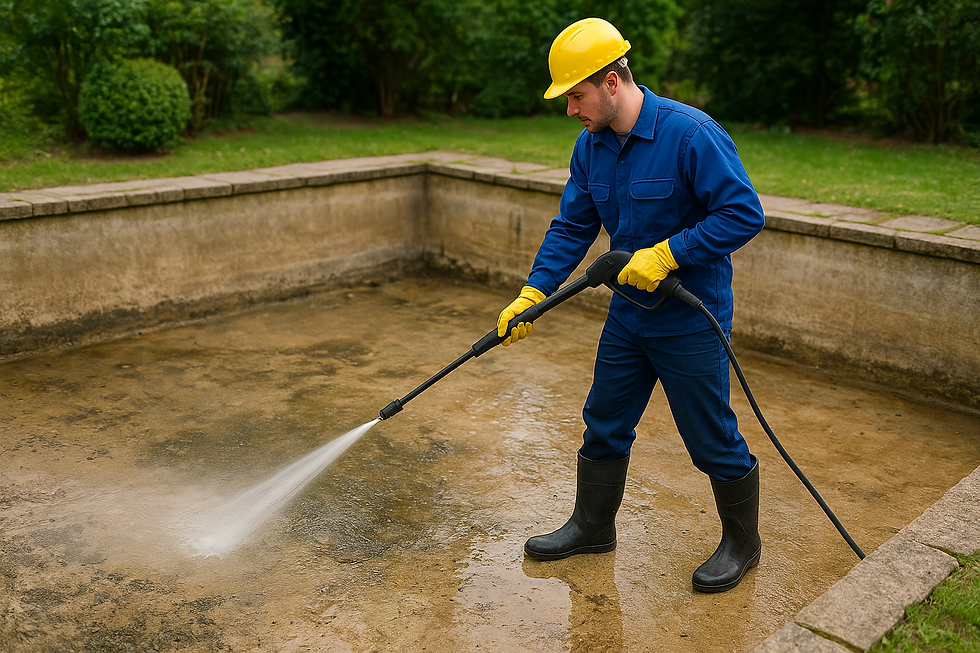The Rationale and Procedure to Winterize a water feature or fountain
- Ken Wu
- Oct 9
- 2 min read
As temperatures drop, preparing your water feature for winter is essential to protect both the structure and the mechanical systems. Whether your feature is part of a public plaza, a hotel courtyard, or a private estate, proper winterization ensures longevity, safety, and easier startup in spring.
Why Winterization Matters Before Freezing Temperatures Arrive
When water freezes, it expands — and that expansion can cause serious damage to pipes, fittings, pumps, and even the concrete or stone basin of your fountain or pond. If a feature is left full of water during sub-zero temperatures, ice can crack surfaces, rupture plumbing, and damage expensive mechanical equipment.
Winterizing your system before the first frost helps prevent:
Freeze damage to buried and exposed piping
Cracking or spalling of fountain basins and finishes
Pump and filter damage from trapped water
Costly repairs and delayed spring startup
Taking these steps early is an investment in the longevity of your feature — and peace of mind during the off-season.
When Winterization May Not Be Required
Not every water feature requires full winter shutdown. The need depends largely on climate and system design.
Heated systems: Some high-end features are equipped with basin or line heaters that prevent water from freezing. These can safely run year-round if monitored and maintained properly.
Mild or coastal climates: In regions that rarely experience freezing temperatures — such as parts of coastal British Columbia — the risk of freeze damage is minimal. However, regular inspection and cleaning are still recommended.
Indoor water features: Features located entirely indoors, or in protected atriums, typically do not require seasonal shutdowns.
Even in these cases, a partial maintenance routine may still be beneficial to remove debris, balance water chemistry, and check mechanical components.
Key Steps to Winterize a Water Feature
For outdoor features in cold climates, a proper winterization procedure typically includes the following:
Drain the water feature completely
Remove all water from the basin, surge tank, and visible pools.
Drain mechanical vaults, filters, and pump housings.
Open all drain valves and blow out lines with compressed air if possible.
Clean all surfaces
Remove leaves, algae, and sediment buildup.
Clean tile or stonework to prevent staining or deterioration over winter.
Inspect for cracks or loose finishes while surfaces are exposed.
Protect the plumbing and equipment
Keep service drains open throughout the winter to avoid trapped water.
Disconnect and store delicate components like jets, nozzles, and decorative fittings in a dry, labeled order for easy reinstallation.
Lubricate O-rings and seals where necessary.
Secure the system
Cover or shield exposed mechanical openings to prevent debris or wildlife from entering.
Ensure electrical panels and control systems are turned off and protected from moisture.
Store jets or nozzles in the mechanical room with an order to make restart work easy.
Final Thoughts
Winterizing your water feature is not just about preventing freeze damage — it’s about preserving the artistry and function of a carefully designed system. A well-maintained feature will restart smoothly in spring, look better year-round, and require fewer costly repairs.
If you’re unsure about your system’s winterization needs, Pacific Fountain Supply can provide guidance or coordinate seasonal maintenance plans tailored to your specific feature and climate.




Comments